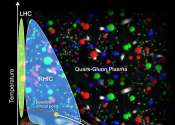Structure of 'oil-eating' enzyme opens door to bioengineered catalysts
Scientists at the U.S. Department of Energy's Brookhaven National Laboratory have produced the first atomic-level structure of an enzyme that selectively cuts carbon-hydrogen bonds—the first and most challenging step in ...









